Research Reflections and Looking to the New Year
Published December 13, 2022
We asked a few EPA researchers to share their accomplishments from the past year and what they're looking forward to working on in 2023. Read their responses below.
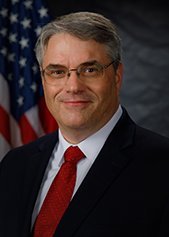
Chris Frey, Assistant Administrator for Research and Development and EPA Science Advisor
What did you enjoy most about your job in the last year?
I most enjoy the people of ORD – everyone who makes ORD run, from the folks dealing with budgets, information technology, travel, contracting, partner engagement, interaction with the action development process, research planning, and others, to the scientists (of all disciplines), engineers, technicians, lab managers, and others who are on the front lines of investigation and translation. I have had the opportunity to spend some time at labs across ORD, meeting with partners in the regions, states, and tribes, and interacting with the scientific community. I most enjoy learning from others about how great their work is!
What are you most excited to work on in 2023?
My biggest job is to do what I can to enable everyone else to do their work. I am looking forward to continuing to support my colleagues. Part of that is I want to do what I can to share with our partners internally and externally what we’re doing, why it is important, and the difference that our work makes. I’m most excited to continue working with all of ORD in 2023.
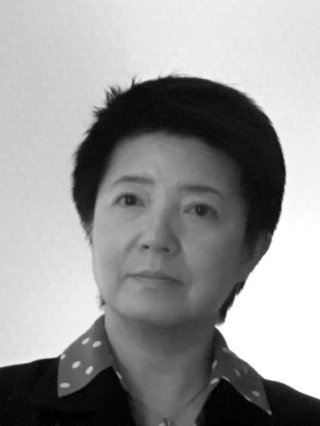
Cissy Ma, Research Engineer
What scientific accomplishment from the past year are you most proud of?
The proudest accomplishment from the past year had to be the involvement as part of the US Federal Expert Panel on Working Group II (WG II) contribution to the IPCC Sixth Assessment Report (AR6) – Chapter 4 (Water) co-lead, expert panel for SPM (Summary for Policy Makers) and FGD (Final Government Distribution). Further, the participation as a part of the US delegation to the IPCC P-55 session, supporting the Department of State in negotiation with other nations’ delegates in the approval of the IPCC Summaries for Policymakers (SPM). It was an honor that I received an accolade letter from the White House’s Office of Science and Technology Policy (OSTP) leadership and the assistant to the President for the IPCC contribution and finalizing SPM during approval plenaries.
What research goals do you have for the next year?
Our research goals are to use different system analyses and integrated assessment metrics to design and evaluate technologies and configurations of water systems to achieve the maximum efficiency while minimizing the environmental impacts, addressing water issues under climate adaptation and climate mitigation. Hopefully our research will shed some lights on the transformation strategies in net zero emission and net zero water systems.
View Cissy's researcher profile.
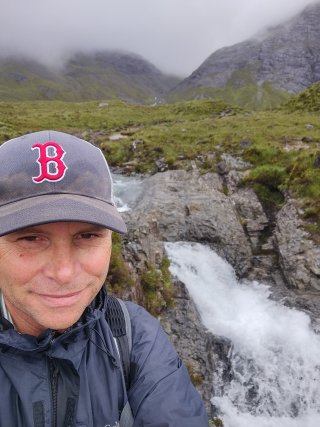
John Iiames, Research Biologist
What scientific accomplishment from the past year are you most proud of?
Our article “Modeling Anthropogenic and Environmental Influences on Freshwater Harmful Algal Bloom Development Detected by MERIS Over the Central United States” was highlighted as a Research Spotlight Article in Eos, a science news magazine: “Cyanobacteria Blooms Exceed WHO Thresholds in Midwest Lakes.”
What did you enjoy most about your job in the last year?
I worked on two 16-day deployments to wildfires in Oregon and California this past summer. I served as an Air Resource Advisor providing the Incident Management Teams, public, and government (local, state, national) smoke assessments for forecasting air quality within communities surrounding the fires.

Andrea Clements, Physical Scientist
What scientific accomplishment from the past year are you most proud of?
We are so excited that five hands-on lesson plans designed to help learners use air sensors to understand air quality, pollution sources, and sensor technologies are now available to the public! In addition to the lesson plans, we’ve also made some background presentations, a resource list, and a frequently asked questions document available to provide further support for educators. These lesson plans can be used by all kinds of educators whether they be school teachers, librarians, youth group organizers, and more. Each lesson is adaptable, and learners really love the hands-on approach using new technologies. We are excited to see how people use these new learning tools.
What are you most excited to work on in 2023?
We recently completed the Enhanced Air Sensor Guidebook – a resource to help users plan and execute air monitoring projects using air sensors. It was made available to the public on the Air Sensor Toolbox in December. I’m most excited to see how this new resource might be used by the enhanced air monitoring for communities grantees and others in 2023!
View Andrea's researcher profile.

Cavin Ward-Caviness, Computational Biologist
What scientific accomplishment from the past year are you most proud of?
The scientific accomplishment I am most proud of over the past year was completing the analysis of PFAS health effects using electronic health records. This work was one of the first times electronic health records had been used to study PFAS and showed associations between PFAS and multi-morbidity, a novel outcome for PFAS epidemiology that focuses on the co-occurrence of multiple chronic diseases rather than examining one at a time.
What research goals do you have for the next year?
My primary research goals for next year are to continue expanding the use of electronic health records across the EPA, incorporate environmental exposures into machine learning models for clinical risk prediction, use trans-disciplinary epidemiological and toxicological studies to examine health impacts of PFAS and air quality, and to evaluate clinical and molecular factors which may be used to identify the populations most susceptible to air pollution exposure.
Read Cavin's researcher profile.
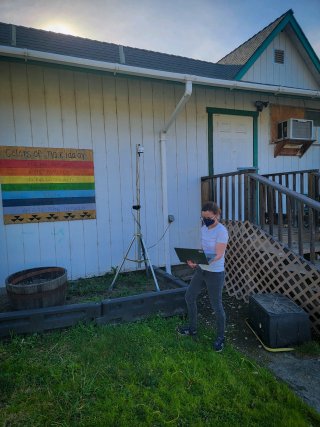
Amara Holder, Mechanical Engineer
What did you enjoy most about your job in the last year?
I was very happy to be able to complete a field study looking at the effectiveness of do-it-yourself air cleaners for reducing wildfire smoke. The study had been postponed for a year due to the pandemic, so it was really great to be able to get out to our partner community and interact with people again and do research. We received very insightful feedback from our study participants, which reminded me why community-based research is so valuable. Those kinds of experiences cannot be obtained through a Teams meeting!
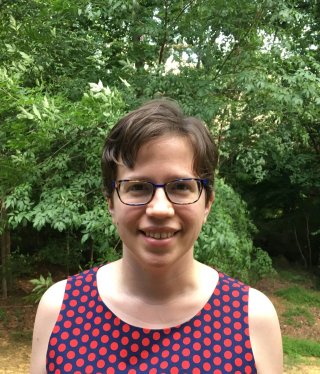
Anne Weaver, Epidemiologist and Population Health Data Scientist
What did you enjoy most about your job in the last year?
I would say I enjoyed being able to get out from behind my desk and engage with communities in North Carolina and California, including touring communities, attending community events, and speaking with community members. Continuing these community collaborations is one of the things I’m most looking forward to in 2023.
Read Anne's researcher profile.
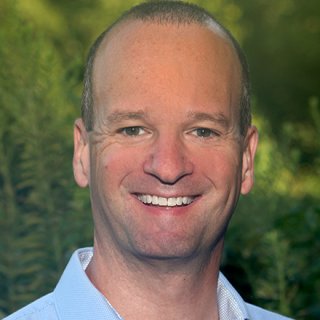
Blake Schaeffer, Research Scientist
What scientific accomplishment from the past year are you most proud of?
Progress in science can sometimes appear slow and incremental. I am grateful that our research team was able to make such significant advances in 2022. Our team demonstrated new potential of commercial satellites for surface oil spills, measured the spatial area of cyanobacterial harmful algal blooms detected with the Cyanobacteria Assessment Network, and improved methods of monitoring seagrass in estuaries. These scientific advances are being used to educate the next generation of scientists, address management needs, and provide valuable information as part of classroom learning, hands on trainings, and practical environmental applications.
What are you most excited to work on in 2023?
In 2023, I look forward to evolving technological advances in space-based water quality monitoring with colleagues around the world, and working as part of the science team on a NASA Earth Venture Instrument called the Geosynchronous Littoral Imaging and Monitoring Radiometer, or GLIMR for short. GLIMR is new space-based sensor that will monitor US coastal water biology, chemistry, and ecology and provide vital information on coastal events such as oil spills and harmful algal blooms.
Read Blake's researcher profile.

Jules Witts, Social Scientist
What scientific accomplishment from the past year are you most proud of?
I am most proud of my first experience aboard our research vessel Lake Explorer II to conduct water quality assessments for the binational Cooperative Science and Monitoring Initiative (CSMI) efforts. As a social scientist, it was completely uncharted territory, but I was able to learn a lot and get to know a lot of my colleagues, plus I didn’t get sea-sick—a win-win!
What are you most excited to work on in 2023?
I am most excited to work on building a program for our environmental education and outreach efforts. Investing in our communities has been such a rewarding experience and I hope to expand our efforts so that we can build relationships and potential collaboration opportunities. As a huge nerd, I am mostly just excited for new projects and skills to learn.
Read Jules' researcher profile.

Mark Strynar, Chemist
What scientific accomplishment from the past year are you most proud of?
When I began my scientific career at EPA, a lofty goal was to get a publication in Science or Nature as they are two of the more prestigious scientific journals available for communication of our work here at EPA. I am pleased to say that working with many of my EPA colleagues we published a paper Evich et al., 2022 in Science this year about “Per- and polyfluoroalkyl substances is the environment.” Seven of the nine authors are EPA scientists, the other two are global leaders on the topic of PFAS, demonstrating the leadership role our Agency has to play on this very important and visible topic of research.
Read Mark's researcher profile.
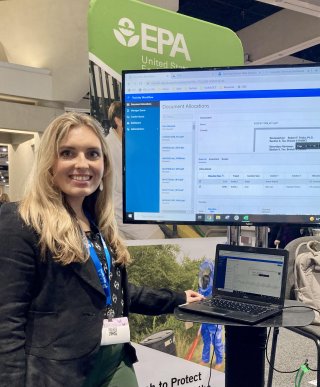
Madison Feshuk, Biologist
What scientific accomplishment from the past year are you most proud of?
My teams have accomplished so much in the past year, from database and software releases to strategic research planning for the next few years! A highlight for me was being able to give the first live and in person demonstration of a new document extraction tool at the 2022 Society of Toxicology meeting.
What are you most excited to work on in 2023?
In 2023, I am most excited to continue supporting data curation efforts that promote the adoption of new approach methodologies (NAMs) and increased data interoperability, with the goal to ultimately achieve reductions in animal testing.
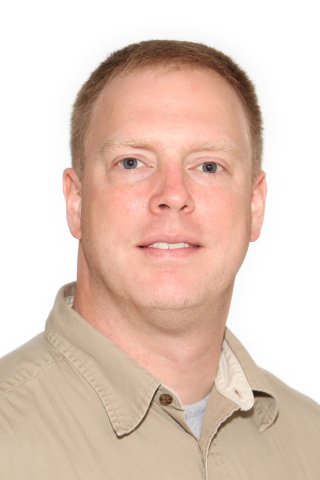
Josh Harrill, Cellular and Molecular Toxicologist
What scientific accomplishment from the past year are you most proud of?
This past year, my most important scientific accomplishment was helping a pair of post-doctoral trainees in my lab embark on the next phases of their careers as a principle investigator at a research institute for environmental sciences and as a developmental neurotoxicologist at an international science consortium, respectively. I’m also proud of the continued professional development of the federal and non-federal research staff in my group as they continue to pursue EPA’s mission to protect human health and the environment. One of the most rewarding things we do as researchers at EPA is train the next generation of scientists. It is always excellent to see those trainees succeed! My team was also able to deliver multiple products under the Chemical Safety for Sustainability Strategic Research Action Plan in the area of high-throughput toxicology, specifically related to high-throughput transcriptomics (HTTr) and high-throughput phenotypic profiling (HTPP). Data generated in these projects will help fill knowledge gaps in hazard characterization for many chemicals that could be present in the environment.
What are you most excited to work on in 2023?
The most exciting projects I’ll be working on in 2023 are in support of the TSCA New Chemicals Collaborative Research Program (NCCRP) and a collaborative project between the EPA and Unilever, both of which are exploring ways to integrate and apply New Approach Methods (NAMs) for chemical assessment which avoid the use of animal testing. This innovative science will contribute to the development of “toolboxes” and decision support tools for next generation (i.e. modernized) chemical risk assessments.
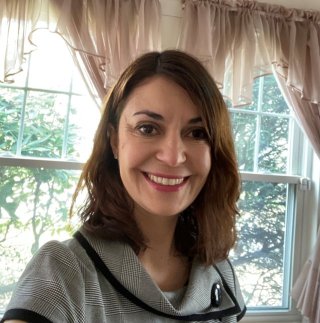
Valerie Zartarian, Senior Physical Research Scientist
What scientific accomplishment from the past year are you most proud of?
I am most proud of coauthoring EPA’s Lead Strategy (Strategy to Reduce Lead Exposures and Disparities in U.S. Communities) that was released in October; publishing two papers on developing and applying innovative data mapping and modeling approaches to identify high lead exposure risk locations and their environmental drivers; and advancing intra- and inter-agency science collaborations in support of the Federal Lead Action Plan (Federal Action Plan to Reduce Childhood Lead Exposure).
The first paper focused on a collaborative Michigan case study, in which EPA Office of Research and Development (ORD) and EPA Region 5 colleagues developed a generalizable approach for identifying, verifying, and analyzing locations with a high prevalence of children’s elevated blood lead levels. This work will help EPA continue to advance its data analysis and mapping science for lead so that states and communities have the information needed to target and prioritize actions to reduce, prevent, and mitigate lead exposure risk, particularly for children.
In the second paper, EPA colleagues and I, together with colleagues from both the CDC and HUD, compiled and summarized a wealth of public data and national maps of lead indices and models, environmental lead indicators, and children’s blood lead surveillance data—providing a state-of-the-science overview of geospatial approaches for pinpointing areas at high risk for lead exposure. The work is part of a collaborative, whole-of-government effort to prevent lead exposure, particularly for the most vulnerable communities.
What are you most excited to work on in 2023?
I am most excited to continue working collaboratively on science towards implementing the EPA Lead Strategy and the Federal Lead Action Plan goals to identify U.S. communities with high lead exposures and improve their health outcomes. The questions my team is focusing on are: Where are lead hotspots in the U.S., especially in the most vulnerable and disproportionately impacted communities? How can environmental drivers of those hotspots be identified with available data and local knowledge, so EPA and other agencies can most effectively prevent and mitigate lead exposures? I am also excited about contributing further to ongoing international lead science conversations with similar questions.
Read Valerie's researcher profile.
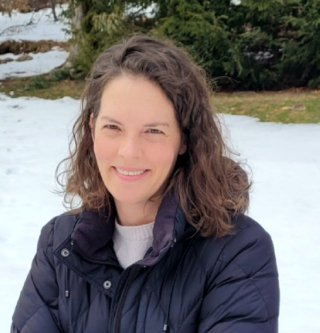
Autumn Oczkowski, Research Ecologist
What are you most excited to work on in 2023?
About eight years ago, my colleagues and I began studying two very different systems that had substantial water quality issues. We began this work partially with the hope that it would raise awareness of these issues and that the awareness could create change. And it actually did! Action has been taken in both of these systems to improve water quality. In both cases, our work was just part of the supporting evidence, of course, but this year I’m really looking forward to seeing how these systems respond to the improvements. We think of it as a double reward to be able to watch the estuaries that we’ve invested in get cleaner and being in the perfect research position to document it.

Amalia Handler, Biologist
What scientific accomplishment from the past year are you most proud of?
I published a paper about the nitrogen biogeochemistry of an urban accidental wetland earlier this year. It’s a fascinating study system so I am glad to share it with the scientific community.
What are you most excited to work on in 2023?
I am still early in my career and my role recently changed, so I am most looking forward to building relationships and research teams within my Division and the Agency more broadly. There are so many great scientists I want get to know!

John Washington, Research Chemist
What scientific accomplishment from the past year are you most proud of?
I am pleased that the journal Science recognized EPA leadership in environmental and PFAS (per- & polyfluoroalkyl substances) research by inviting us to write a review article on PFAS in the environment for their journal, which together with the journal Nature is widely regarded as one of the two leading scientific journals globally. The most enjoyable part of my job in the last year was the opportunity to collaborate with a small fraction of EPA’s many great PFAS researchers on the article, including Marina Evich, Mary Davis (retired), James McCord, Brad Acrey (transferred to Region IV), Jill Awkerman, Andy Lindstrom (retired), Tom Speth, Caroline Stevens, Mark Strynar, Eric Weber, and Matt Henderson.
What are you most excited to work on and what are your research goals in 2023?
We hope to make fundamental contributions to knowledge regarding controls on the fate and mobility of anthropogenic organic compounds (e.g., agricultural herbicides and insecticides, pharmaceuticals, PFAS) in soils, vadose and aquifer settings, in the cause of helping to safeguard US water supplies.
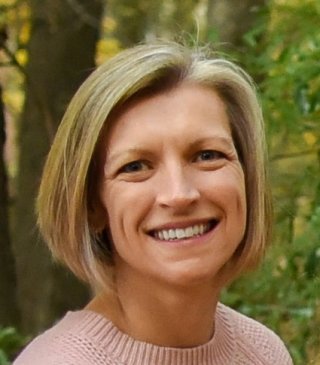
Kristen Foley, Research Statistician
What scientific accomplishment from the past year are you most proud of?
I am very proud of my StRAP3 deliverable of 18 years of meteorology, emissions, and air quality modeling datasets as part of EPA’s Air Quality Time Series (EQUATES) project. The product represents 3 years of effort from our workgroup which included members from ORD, OAQPS, and OTAQ. A very close second would be working with the Community Multiscale Air Quality (CMAQ) development team to publicly release a major model update in October. This was again a 3-year effort and I’m so proud to be able to play some part in our team’s accomplishment. Working on these multi-year projects and collaborating with such a diverse group of amazing scientists is absolutely the favorite part of my job.
What are you most excited to work on in 2023?
I am declaring 2023 my ‘year of evaluation’. EQUATES and the CMAQ release generated a wealth of data to evaluate CMAQ against measurements and identify potential areas to improve the modeling system. We have only scratched the surface of doing this type of analysis so I am very excited to spend a lot of time writing R code and looking at plots to see how we can turn the ‘data’ into ‘information’ for CMAQ users and developers.

Roman Mezencev, Research Scientist
What scientific accomplishment from the past year are you most proud of?
This year we reported the results of our analysis that implicated the inactivation of the CFTR gene in chemical carcinogenesis. CFTR encodes a cell membrane transporter that plays a fundamental role in maintaining the homeostasis of epithelial tissues. Its inactivation by gene mutations is the cause the cystic fibrosis, which is one of the most common genetic disorders. Previous epidemiological and animal studies suggested that CFTR is a tumor-suppressor gene, and that loss of its function is associated with an increased risk of cancers. Our analysis of transcriptomic data from an in vivo study supported the role of CFTR as a tumor-suppressor gene. Moreover, our study implied for the first time that the inactivation of CFTR by chemical exposure could be associated with cancer development. These results fit well with those of others who reported associations between the inactivation of CFTR, exposure to other environmental toxicants, and other diseases.
What are you most excited to work on in 2023?
I am thrilled with the opportunities from my ongoing research projects, one focusing on transcriptomics and the other on complex relationships between histopathologic findings and organ weight changes induced by exposure to toxic chemicals. Toxicogenomic is a new alternative method that can address the limitations of traditional toxicological studies, including their high cost and time- and resource-intensiveness. Understanding relationships between organ weight changes and histopathologic findings will inform the determination of toxicity values that are established to protect human health.
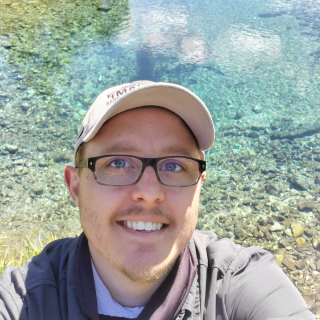
Jon Fields, Hydrologist
What scientific accomplishment from the past year are you most proud of?
I am most proud of publishing my first manuscript in a peer-reviewed scientific journal, the work is titled, “Electrical Resistivity Imaging at an Enhanced Aquifer Recharge site.” I also published my thesis work which has been on my to-do list for over 5 years. I’ve set higher goals for myself since starting at the EPA in 2020 and neither work would be published without this opportunity.
What are you most excited to work on in 2023?
Conducting additional geophysical surveys, particularly collecting Nuclear Magnetic Resonance (NMR) data. Many of the geophysical tools available to us tell us about different subsurface characteristics but are used indirectly to estimate water content. NMR can be deployed to directly quantify water content and permeability. We hope using this technology will allow us to better guide communities in selecting groundwater characterization methods in an ever-changing climate.
Editor's Note: The opinions expressed herein are those of the researcher alone. EPA does not endorse the opinions or positions expressed.
